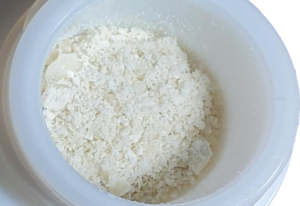

Will The Legal Marijuana Market Size Up to Black Market?
There is no stopping the explosive growth of the U.S. legal marijuana market size. While Illicit sales are still estimated to be well over $100 billion, that’s actually great news for the cannabis industry. It means that legal marijuana sales in the U.S. still have a lot of room to grow.
The U.S. legal marijuana market is booming. It’s projected that by 2026 it will be about the same size as the craft beer industry (which took many decades to grow). These two industries have something in common. They both had a market long before their prohibition ended. Just as the alcohol industry stole market share from moonshiners, the legal marijuana market will steal market share from the black market. And the marijuana market could easily grow to be as ginormous as booze.
Some of the greatest business success stories from the 20th and 21st century — think household names like Microsoft, Apple, Google — all had meager beginnings and virtually no customer base when they were starting out. Over decades, the founding fathers eventually developed a market for their wares and managed to grow their businesses exponentially.
Conversely, in just a couple of decades, the legal cannabis industry has managed to bloom into a billion-dollar industry. That is for the very reason we mentioned above. As with alcohol, there was already a massive customer base spending well north of 100 billion dollars per year on weed before it was made legal.
What’s even more amazing is that the federal prohibition of alcohol ended. The federal prohibition of marijuana has not. Medical and/or recreational marijuana has grown a state or two per year on average. Cannabis products are now legal in 36 U.S. states.
Furthermore, in addition to taking market share away from the black market, marijuana is also sapping customers away from other markets such as the gargantuan alcohol, tobacco, pharmaceutical, and cosmetics industries!
How Big Is The Boom?
As the country continues to inch its way toward ending federal prohibition, cannabis industry market analysts at Big Data Security Analytics are reporting that the U.S. cannabis markets are booming big time.
- Nationwide marijuana sales passed the $17.5 billion mark. That’s a 46% increase from 2019.
- California increased sales by $586 million. That’s up 28.6% from a year ago for a total of $3.5 billion.
- Colorado’s cannabis market grew by more than one-third.
- Oregon’s marijuana market nearly doubled.
- Florida has surpassed 500K medical marijuana patients — more than double 2019’s count.
- Illinois cannabis sales crossed the $1 billion mark.
- About 30% of consumers shop for cannabis products more often than they did in 2019. And 25% say their cannabis usage has increased since before the pandemic. Cannabis deliveries increased 25%.
Growing Accelerated By The Pandemic
We think one of the biggest drivers of legal cannabis market growth is the shift from the illicit market,” writes New Cannabis Ventures publisher Alan Brochstein:
“The pandemic proved to be very helpful on this front, as states which had previously not permitted delivery or curbside pickup did so, and this changed the market in a big way. Consumers can now order cannabis online the same way they order other goods, something the illicit market can’t match. The very solid growth in mature Western states, especially for flower, is a sign that the legal market is continuing to convert illicit market consumers.”
The Florida medical marijuana program, for example, has flourished in the past year with the introduction of telehealth and the addition of edibles to menus at Florida medical marijuana dispensaries.
The patient population in the Sunshine State is growing rapidly and along with it, so have sales. The number of dispensed units has increased by 84% compared to the same period one year ago, and medical marijuana flower sales have grown 139%.
It’s Spreading
Another factor driving the growth of the industry is the opening of new cannabis markets across the country. Virginia recently legalized marijuana as did Arizona and New Jersey — all states with preexisting medical marijuana programs.
Also, in marijuana-legal states, purchasing marijuana is becoming easier and more convenient, not to mention safer. Legal dispensaries also generally offer a broader range of products than street dealers.
In the early years of legalization, a new market’s growth may be somewhat constrained due to a lack of distribution points and product supply. However, as the wrinkles get ironed out and the number of dispensaries grows so too do sales.
The percentage of users is also spreading. In states with recreational sales, the percentage of the population that smokes weed or otherwise consumes cannabis products has risen from 38% to 43%. In the super-cannabis-friendly state of Colorado statistics indicate that 48% of its residents ingest some form of marijuana. And in California, market penetration increased from 37% to 39%.
“Close to 50% market penetration is really compelling, as alcohol penetration is around 60%,” says Kelly Nielsen, who runs BDSA’s insights and analytics department.
U.S. Cannabis Sales Video
Where It Goes, No One Knows...
At this point, there is no stopping the explosive growth of the legal cannabis industry in the U.S. which has already passed the $17.5 billion mark and is expected to surpass $40 billion by mid-decade — or about 40% of the size of the total alcohol market.
The Green Rush is encouraging news for 420-friendly states for three reasons. First, rather than going into the hands of cartels and criminals, more than a third of the money spent on weed is now flowing through state economies. Second, state coffers are gaining a significant economic boost from marijuana tax revenues. And third, states with decriminalization and legalization measures are saving millions of dollars on human resources formerly spent on law enforcement and incarceration.
As the Covid-19 virus continues to wreak havoc in 2021, some economic strategists have voiced concern regarding the pandemic-fueled growth of the marijuana industry and what might happen once the stimulus and unemployment checks dry up. However, most stakeholders are confident in the industry’s innate hardiness and remain optimistic about the continued expansion of the marijuana market and its propensity to steal business away from the black market as well the alcohol, tobacco, and pharmaceuticals markets.
BDSA’s Nielsen concludes, “We expected more potential impact from an economic downturn, but the industry has proven to be resilient, it’s potentially recession-proof.”






